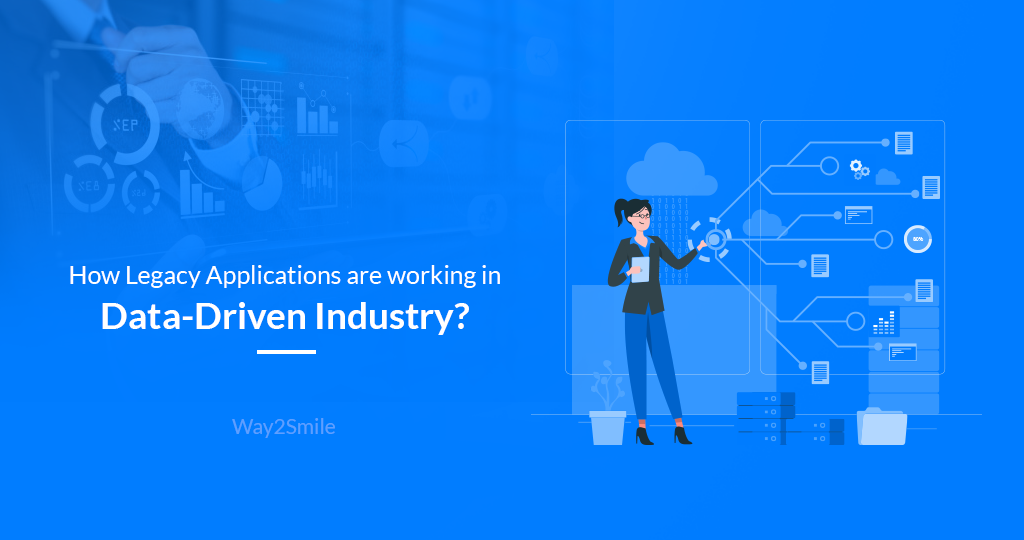In general, business that give way for the inclination of digital transformation therein achieves greater control over its processes, and with high flexibility offered across IT Systems, a lot of digital transformation companies can now any time move ahead to build the smart strategy to stay ahead in the competition. However, the infinite proliferation of new technologies has resulted in inducing both the software development companies and software engineers to believe that these applications would soon have an update and therefore take up a heedless approach towards it. A research study conducted by IDC, states that 67% of Global 2000 Enterprises might build the most suitable digital technology solutions and develop a resilient business strategy by this millennium.
The rate of enterprise adoption to technological innovations is rather becoming irresistible and strongly dependent with continuous changes taking place with new software’s and hardware’s. The different processes within a business lead to an excessive generation of several data formats which result to incompatibility on the part of other software’s and applications. Hence, enterprises will have to create the awareness to acknowledge the presence of legacy applications and to handle them elegantly well becomes a top prerogative, for businesses participating in this data-driven industry.
An expert at data science, Edd Wilder-James reveals that 80% of data preparation efforts spent towards contributing to data analysis would eventually be the same for any digital transformation companies to adapt with 80% of their work which is data-driven. This level of transformation approach in organizations would ease out the complete integration of all data sources and then make them readily available for building workplace strategies. We have a list of 5 Strategies for organizations to embrace data-driven transformations effectively and to break up the data silos.
Data Consistency
The need to appropriately use data and then refer to virtuous decisions is getting all time high in the organizations. Most of the organizations however, lack the access to technology solutions without capturing the data, especially for business stakeholders to leverage and strategize. In reality, every IT department in any company which owns data is made practically viable thoroughly supporting the silos culture. The consistency of Data Generated at enterprises would ensure stakeholders to make the decision more clear without any barrier present in the transformation process. Most of the Software Development Companies might prefer these technology solutions which is fully architected using Smart Technologies. A few of the commonly available techniques for achieving data democracy are:
Data Federation
Data Federation intelligently makes use of MetaData to accrue a wide variety of data from different sources and then compile each one of the data to a unified cloud database.
Data Virtualization
Maintain the Data Virtualization Intrinsically can help enterprises retrieve and manipulate data, eliminate all inconsistencies that appears in data eternally.
Self-service BI Applications
Basically, the data preparation is a stringent process which results in delivering the most powerful analytical insights. In order to break the silos, it necessitates collecting the set of all significant data’s and present them meaningfully to employees for achieving business productivity.
Cloud-based Approach
It might help deploy web apps with a primitive level of business intelligence over the cloud and these strategies generally demands for all data’s to be converted to a reusable format. This can be achieved by aggregating aplenty of data to a cloud-based warehouse. In addition, data lakes have to be maintained strategically since, every business is unique and desires to take full advantage of the useful data. There are many global financial businesses that have leveraged the power of cloud platforms and succeed in breaking through the data silos. In this manner, a leading asset management firm in the U.S. called Alliance Bernstein took the initiative to become the early adopter of cloud based approach and then enabled its sales and marketing teams to work proactively with real-time updates.
Representation Learning
It can provide businesses an easy way to comprehend the data at different levels and this type of learning is very much a part of Machine Learning techniques. Representation Learning creates a lot of opportunities for Mobile App Development Companies to get profited, simply through developing compatible enterprise applications with vast capabilities to handle Images, Audio and Video formats. The Start-ups can use this method of learning to empower their business to be process-ready from data to applications thus, interfacing both the real-world and internal data to drive digital innovation.
Create a unified view of the Data Management Systems
A lot of software development companies are keen on breaking the monotone of siloed data prevailing at large enterprises and government organizations. Therefore, are making in a huge effort to create the unified view of data management systems for organizations to acquaint the composite knowledge on regarding every customer and their access points. A similar unified view of data management system was proposed by NASA to better understand its prior tests, experiments, faults and designs. It partnered with Stardog, one of the most renowned mobile app development companies in the U.S. to create this unified view of test data’s related to real-world context and then enhanced work productivity. This process of data management is also called as Data Virtualization. Enterprises should find it easy to integrate the legacy and disparate systems together to produce a unified view of data for every business user to access them in real-time.
Embrace Omni channel Infrastructure
Enterprises can adopt to the Omni Channel Infrastructure and then offer the data driven application development environment to each one of its customers and enhance user experiences greatly. Beyond, these digital innovation in the enterprise can now expect more benefits from the usage of data. With the Omni channel Infrastructure present, the business can link both the legacy applications and modern systems to handle the different data formats effectively. Enterprise can begin to leverage the data-driven application development either through establishing the point to point integration or APIs. Most of the operational processes can be streamlined efficiently by building a unified system for data with attributes to recommend decision-ready insights.
Conclusion
In general, Enterprises frequently find combing through all the digital records to be a tedious task with legacy applications and technology solutions kept in place, thus requisite all stakeholders to handle the inconsistencies that prevail on multiple data formats. Organizations will be needing the integration of digital innovation to transform its workplace to a data driven application development model, empowering business to become more familiar amidst the voluminous quantity of structural, political and vendor data.







